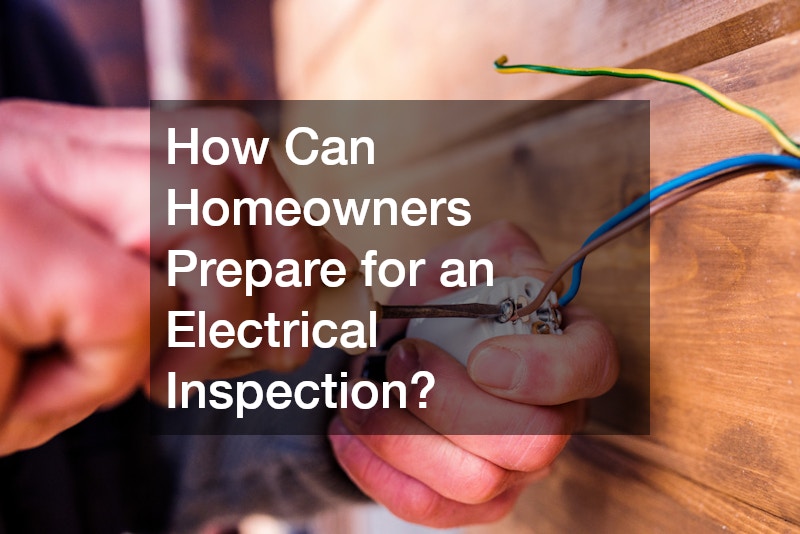Understanding the significance of home electrical inspections is crucial for homeowners. This article will explore common questions and essential topics related to electrical safety and maintenance.
1. Why Are Home Electrical Inspections Necessary?
1.1 Identifying Electrical Hazards
Electrical inspections help in detecting potential hazards that could lead to fires or electrical shocks. These hazards often go unnoticed by homeowners, making inspections essential for safety.
Hidden issues within your electrical system could include faulty connections or damaged insulation. By identifying these problems early, you can take corrective measures to prevent accidents.
Regular inspections contribute to peace of mind, knowing that your home is safe from electrical hazards. They also help extend the lifespan of your electrical system by addressing small issues before they escalate.
1.2 Ensuring Code Compliance
Ensuring your home’s electrical system adheres to local codes and regulations is a key part of an inspection. This compliance ensures that new installations are done safely and that existing systems are up to standard.
Local codes are updated regularly, often incorporating new technologies and safety discoveries. Therefore, an inspection can reveal necessary updates to bring your home in line with current codes.
By maintaining code compliance, homeowners avoid potential legal issues and penalties. It also increases the property’s value by showcasing a well-maintained and compliant electrical system.
2. What Do Inspectors Look For During an Electrical Inspection?
2.1 Outdated Wiring Systems
Inspectors check for outdated or dangerous wiring that can pose risks. Old wiring can cause electrical failures or even fires if not replaced or repaired.
The presence of older types of wiring, such as knob-and-tube, is often a red flag. Inspectors assess whether such wiring meets current safety standards or requires an upgrade.
Through this process, inspectors help homeowners prioritize necessary upgrades. Modern wiring systems are not only safer but also more efficient and reliable.
2.2 Functionality of Safety Devices
GFCIs, AFCIs, and other safety devices are tested for proper operation. These devices are crucial for preventing electrical shocks and other hazards.
An inoperative GFCI outlet could mean greater exposure to electrical shock, especially in wet areas. Similarly, AFCIs are essential for stopping electrical fires caused by arc faults.
Testing these devices ensures they function correctly, providing an essential layer of safety. It also serves as a reminder for installation in areas currently lacking these protective measures.
3. How Often Should Home Electrical Inspections Be Performed?
3.1 Recommended Inspection Intervals
Discuss how frequently inspections should be conducted for optimal safety. As a general rule, it is recommended that inspections be performed every three to five years.
New homeowners often benefit from an initial inspection shortly after purchase. Homes that are undergoing renovations should also consider an inspection to ensure all new work aligns with existing systems.
Regular inspections help maintain the integrity and efficiency of the home’s electrical system. This proactive approach significantly reduces the risk of future problems.
3.2 Signs It’s Time for an Inspection
Learn about the warning signs that indicate the need for an immediate inspection. Flickering lights or frequently tripped circuit breakers are indicators of underlying issues.
Unusual odors, especially those resembling burning, are immediate red flags. These may point to overheating wires or faulty appliances that require urgent attention.
Ignoring these signs could result in more severe electrical problems or dangerous situations. Taking immediate action helps prevent potential emergencies and ensures continued safety.
4. What Are Common Issues Found in Electrical Inspections?
4.1 Overloaded Circuits
An overview of how overloaded circuits are a common issue in many homes. This occurs when too many appliances or devices draw power from a single circuit.
Overloaded circuits can lead to frequent trips in breakers, causing inconvenience and potential danger. Inspectors often find such issues in homes with numerous modern electronics.
Addressing overloaded circuits may involve redistributing electrical loads or adding new circuits. This corrective action not only prevents issues but also enhances system efficiency.
4.2 Faulty Wiring
Explore how poor wiring practices lead to inspection failures. Faulty wiring can manifest as loose connections or incorrect wire gauges for the circuits.
These issues could lead to overheating, increasing the likelihood of fires. Inspections aim to identify and rectify these faulty installations before they pose a hazard.
Even minor wiring issues can have significant consequences if left unaddressed. Repairing or replacing faulty wiring can greatly improve safety and functionality.
5. How Can Homeowners Prepare for an Electrical Inspection?
5.1 Pre-Inspection Checklist
Providing homeowners with a checklist to prepare for an inspection. Simple actions like checking for obvious wear or damage can streamline the inspection process.
Ensuring easy access to electrical panels and outlets helps inspectors do a thorough job. Removing any obstructions or furniture enhances the efficiency of an inspection.
This preparation allows inspectors to focus more on identifying potential issues. It also makes the entire inspection process quicker and more straightforward.
5.2 Corrective Measures to Take Beforehand
Discuss steps homeowners can take to address known issues before an inspection. Small corrections, like replacing faulty outlets or securing loose wires, can improve inspection outcomes.
Homeowners should also take note of any inconsistent issues, like flickering lights, for discussion during inspection. Addressing these preemptively helps avoid any surprises during the actual inspection.
Taking these measures demonstrates a proactive approach to electrical safety. It ensures inspections run smoothly, resolving any outstanding safety concerns effectively.
Regular electrical inspections play a vital role in preserving home safety and ensuring that electrical systems operate efficiently and safely to meet standards. By understanding the value of these inspections and taking proactive steps, homeowners can create safer and more secure living environments. Staying informed and diligent ensures peace of mind, knowing that electrical issues are being addressed promptly and professionally.
.




